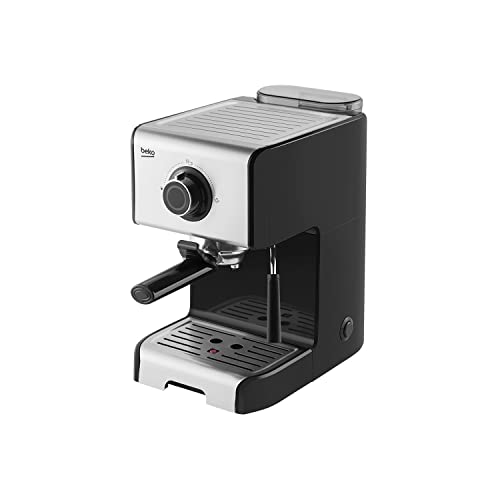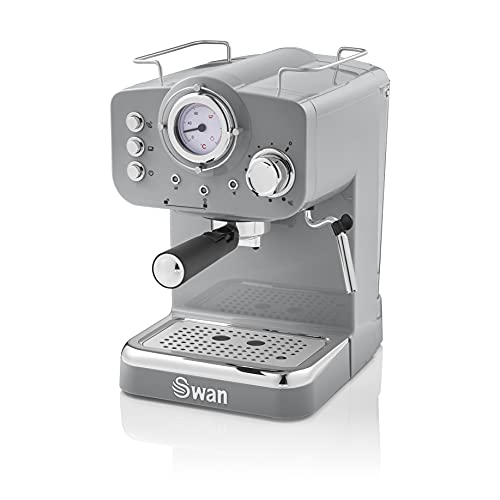Why Coffee Machines Espresso Can Be More Risky Than You Thought

2025-02-21 18:36
86
0
본문
 Coffee and Espresso Machines
Coffee and Espresso Machines espresso coffee machine machines make use of pressure to force water through finely ground and tamped coffee beans. They make a rich, delicious brew.
espresso coffee machine machines make use of pressure to force water through finely ground and tamped coffee beans. They make a rich, delicious brew.Experts from the Good Housekeeping Institute recommend models that brew with a minimum pressure of 9 bars in order to achieve optimal extraction. Beware of brands that claim to use higher pressure than necessary.
Types
The barista espresso machine maker, also referred to as a coffee and espresso maker, brews the concentrated, higher-quality coffee of your favorite café drinks with an average of 9 bars of pressure. The machines come with a variety of features, such as the control of temperature and brew strength, programmable brewing and multiple sizes of drinks. Some machines can have manual or automatic steam wands for creating texturized milk to create latte art. They are available in three primary types of espresso machines, comprising semi-automatic, automatic and super-automatic models. Each espresso machine comes with its own specific level and type of automation.
Semi-automatic espresso machines are the most popular in specialty coffee shops. This gives baristas complete control over the brewing process however, it's not as user-friendly as an automated or fully automatic machine. To get the most perfect espresso shot, grind the beans, then fill the portafilter, tamp it down, then adjust the time of extraction.
Automatic machines have built-in grinders which measures and tamp the grounds for you. They automatically pour out enough water to make espresso, and usually have an adjustable beverage size. In our laboratory tests, they were the most well-liked kind of espresso machine. They provide a nice combination of control and consistency.
Functions
You'll require a reservoir to hold the water you use to make coffee, regardless of whether you select a steam-driven or pump-driven machine. There's also an element of heating that heats up the cold water, generating the high pressure needed for extraction of coffee from grounds.
When the brew button is pressed to brew, the water inlet valve is sealed so that only hot water that is under intense pressure can flow through the portafilter and into the ground coffee. It takes about 25 seconds for the water to be brewed into espresso.
The insulated tubing called the hot-water tubing runs from the reservoir to the spout that is on top of your machine. The heating element of resistance heats the water while it goes through the warming plate made of steel and the aluminum tube.
When the spout is activated, you'll put your cup underneath the spout in order to capture the espresso as it is pushed through the portafilter into your cup. The coffee maker is also likely to have a steam wand, which you can use to heat and froth the milk for drinks that are espresso-based, such as cappuccino or Latte.
Automated machines eliminate the guesswork involved in brewing. They are easy to operate, programmable and can measure and grind beans and the tamping down process. In our Lab tests, they are found to perform best due to their being user-friendly and don't require a lot of user skills.
Materials
The inside of an espresso machine is a forest of copper tubes boilers made of stainless steel, as well as sophisticated firmware. While they may appear complicated, their basic function is to force hot water into finely ground coffee.
When you are looking for an espresso maker, think about size and space requirements, Continue beverage options, energy-saving options and brewing accuracy. Also look for a steam knob to activate the steam wand, best espresso maker which is used for frothing milk and creating the latte art. A gauge of pressure on the front of the machine informs you of the operating boiler and pump pressure. Find an travel espresso coffee makers maker (please click the following website) maker that has two needles so that you can observe both the minimum and maximum pressure.
If you're looking to make more than just espresso, pick one that comes with various sizes of brew, such as ristretto. You can also find models with a removable milk hopper for easy, hands-free frothing as well as the ability to switch between different types of milk. Pick a model that comes with an integrated softener if you have hard water to prevent mineral accumulation and to keep your espresso fresh.
Some manufacturers use a thermostat that is digital, integral and proportional to maintain an appropriate temperature range when making espresso. This feature helps ensure a consistent, high-quality cup of espresso every time. This feature also lowers costs for energy because the machine only operates when necessary.
Maintenance
The maintenance of coffee and espresso machines is becoming more important as they become more available for use at home. Having the best equipment can make a world of distinction in your cup of coffee, but that's only true if the machine is working properly.
A regular cleaning and maintenance routine should include everything from cleaning the steam wand and group head from descaling to changing the water filter every few days. As a rule of thumb that you make between two and five cups of coffee every day, you should clean the majority of the machine at least once a week. Some components of the machine will require cleaning every two to three weeks, for instance, the water tank and the grinder.
You should also backflush your machine each week. This is done by placing the portafilter in its place and running the brew cycles many times. This will help remove any coffee ground or oil that has been left behind. You can also clean the portafilter by using a brush and cleaner specially designed for espresso machines.
Maintaining your espresso and coffee machine properly will ensure that it lasts longer. It is important to take care of the expensive espresso machine.

댓글목록0